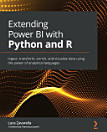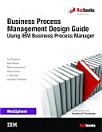Extending Power BI with Python and R: Perform advanced analysis using the power of analytical languages, Edition 2
About this ebook
- Discover best practices for using Python and R in Power BI by implementing non-trivial code
- Enrich your Power BI dashboards using external APIs and machine learning models
- Create any visualization, as complex as you want, using Python and R scripts
- Configure optimal integration of Python and R with Power BI
- Perform complex data manipulations not possible by default in Power BI
- Boost Power BI logging and loading large datasets
- Extract insights from your data using algorithms like linear optimization
- Calculate string distances and learn how to use them for probabilistic fuzzy matching
- Handle outliers and missing values for multivariate and time-series data
- Apply Exploratory Data Analysis in Power BI with R
- Learn to use Grammar of Graphics in Python
This book is for business analysts, business intelligence professionals, and data scientists who already use Microsoft Power BI and want to add more value to their analysis using Python and R. Working knowledge of Power BI is required to make the most of this book. Basic knowledge of Python and R will also be helpful.
About the author
Luca Zavarella has a rich background as an Azure Data Scientist Associate and Microsoft MVP, with a Computer Engineering degree from the University of L'Aquila. His decade-plus experience spans the Microsoft Data Platform, starting as a T-SQL developer on SQL Server 2000 and 2005, then mastering the full suite of Microsoft Business Intelligence tools (SSIS, SSAS, SSRS), and advancing into data warehousing. Recently, his focus has shifted to advanced analytics, data science, and AI, contributing to the community as a speaker and blogger, especially on Medium. Currently, he leads the Data & AI division at iCubed, and he also holds an honors degree in classical piano from the "Alfredo Casella" Conservatory in L'Aquila.





